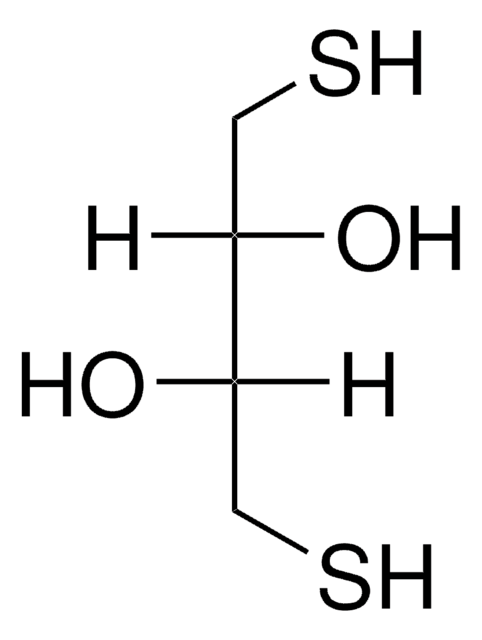19-1335
2-mercaptoéthanol
≥99.0%
Synonyme(s) :
β-mercaptoéthanol, 2-hydroxyéthylmercaptan, BME, Thioéthylèneglycol
About This Item
Produits recommandés
Densité de vapeur
2.69 (vs air)
Pression de vapeur
1 mmHg ( 20 °C)
Essai
≥99.0%
Forme
liquid
Limite d'explosivité
18 %
Disponibilité
available only in Japan
Concentration
14.3 M (pure liquid)
dilution
(for analytical testing)
Indice de réfraction
n20/D 1.500 (lit.)
pH
4.5-6 (20 °C, 500 g/L)
pb
157 °C (lit.)
Densité
1.114 g/mL at 25 °C (lit.)
Chaîne SMILES
OCCS
InChI
1S/C2H6OS/c3-1-2-4/h3-4H,1-2H2
Clé InChI
DGVVWUTYPXICAM-UHFFFAOYSA-N
Vous recherchez des produits similaires ? Visite Guide de comparaison des produits
Application
Adéquation
Mention d'avertissement
Danger
Mentions de danger
Classification des risques
Acute Tox. 2 Dermal - Acute Tox. 3 Inhalation - Acute Tox. 3 Oral - Aquatic Acute 1 - Aquatic Chronic 2 - Eye Dam. 1 - Repr. 2 - Skin Irrit. 2 - Skin Sens. 1A - STOT RE 2 Oral
Organes cibles
Liver,Heart
Code de la classe de stockage
6.1A - Combustible acute toxic Cat. 1 and 2 / very toxic hazardous materials
Classe de danger pour l'eau (WGK)
WGK 3
Point d'éclair (°F)
165.2 °F - closed cup
Point d'éclair (°C)
74 °C - closed cup
Équipement de protection individuelle
Faceshields, Gloves, Goggles, type ABEK (EN14387) respirator filter
Faites votre choix parmi les versions les plus récentes :
Déjà en possession de ce produit ?
Retrouvez la documentation relative aux produits que vous avez récemment achetés dans la Bibliothèque de documents.
Notre équipe de scientifiques dispose d'une expérience dans tous les secteurs de la recherche, notamment en sciences de la vie, science des matériaux, synthèse chimique, chromatographie, analyse et dans de nombreux autres domaines..
Contacter notre Service technique






